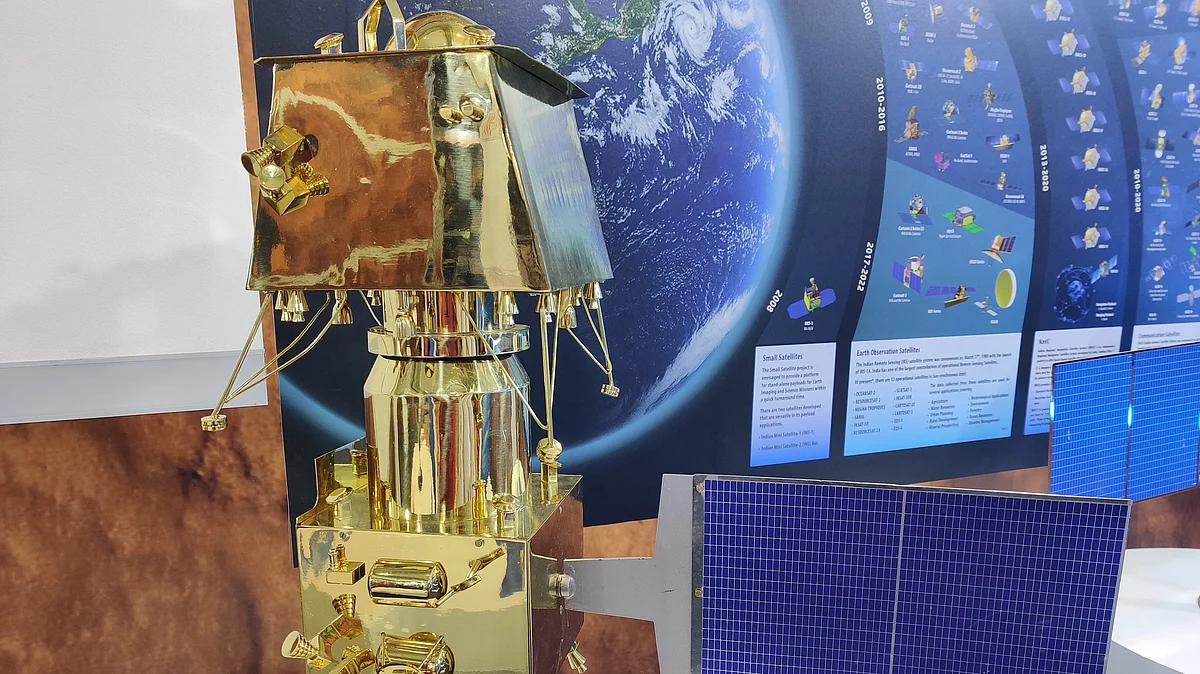Nation
On the moon! Chandrayaan-3 touches down as India celebrates
India has become the fourth country in the world to stage a successful moon mission after Russia, USA and China

India is literally 'moonstruck' as the much-monitored Chandrayaan-3 has finally touched the moon's surface, with millions of eyes across the world having been trained on the Earth's sole satellite to the moon at this time, courtesy the Indian Space Research Organisation (ISRO). With this, India becomes only the fourth nation in the world to have staged a successful moon mission, after Russia, USA, and China.
The Vikram lander aboard Chandrayaan-3 landed near the South Pole of the moon after travelling about 3.84 lakh km for over 40 days. The final 19 minutes of suspense and excitement began at 5.45 pm, as planned earlier, and ended at 6.05 pm with the craft's Vikram lander touching down on lunar soil.
The Vikram lander was also part of the Chandrayaan-2 mission in 2019, and had crashed while in the last phase of landing.
The soft landing is a tricky issue as it involves a series of complex manoeuvres consisting of rough and fine braking.
The powered descent of the lander in a horizontal position began from an altitude of about 30 km at about 5.45 p.m. The automatic landing sequence was activated.
During the rough breaking phase, the lander’s speed was brought down from 1,680 m per second to 358 m per second. The altitude was brought down to 7.4 km above the moon.
The next phase was the altitude hold phase where the altitude was brought down to 6.8 km.
Officials seated at the Mission Operations Complex at ISRO Telemetry, Tracking and Command Network (ISTRAC), Bengaluru, had their eyes glued to their monitors.
Published: undefined
The lander’s position changed to vertical and the craft hovered 150 m over the moon, taking pictures and surveying the landing zone to decide on a safe landing spot. Then the safe landing happened with two engines on out of the four.
With the landing, a major portion of the Rs 600 crore Chandrayaan-3 mission has been realised. The remaining portion is the moon rover rolling down from the lander, moving around and doing the programmed experiments.
The Chandrayaan-3 spacecraft comprises a propulsion module (weighing 2,148 kg), a lander (1,723.89 kg) and a rover (26 kg).
The lander, too, will carry out tasks assigned to it with its payloads: Chandra’s Surface Thermophysical Experiment (ChaSTE) to measure the thermal conductivity and temperature; Instrument for Lunar Seismic Activity (ILSA) for measuring the seismicity around the landing site; Langmuir Probe (LP) to estimate the plasma density and its variations. A passive Laser Retroreflector Array from NASA is accommodated for lunar laser ranging studies.
The mission life of the lander and the rover is 1 Lunar day or 14 Earth days, ISRO said.
The moon lander recently established communication with Chandrayaan-2 mission’s orbiter, which has been circling the moon since 2019, and can now become a backup talking channel.
Chandrayaan-3 was put into orbit on 14 July in copybook style by India's heavy lift rocket LVM3. The spacecraft completed orbiting the Earth and headed toward the moon on 1 August.
Published: undefined
Expectations had been building up for the past few weeks as Chandrayaan-3 first took off. As a result, Besides the scientific and academic fraternity, the thrill has permeated down to the students, commoners and lovers of science.
Experts had said that Chandrayaan-3 has an in-built AI module, so the spacecraft would likely not bounce owing to the impact of the landing.
India's maiden moon mission, Chandrayaan-1, had set off in October 2008, followed by Chandrayan-2 in July 2019, and now Chandrayaan-3 in August 2023.
Top scientific institutions, space observatories and planetariums in the country like Mumbai's Nehru Planetarium, ISRO, IIST, IIAp, IUCAA, IISc, all IITs, several schools and colleges had organised special viewing sessions for today's landing.
Former TIFR scientist Prof. Mayank N. Vahia addressed a lecture giving profound insights into the Chandrayaan-3 mission, and over 400 students witnessed the moon-lander in action on Wednesday evening.
Now, the next big target becomes the upcoming Aditya-L1 Solar Mission likely to be launched in September 2023, followed by the Gaganyaan missions next year
Published: undefined
Follow us on: Facebook, Twitter, Google News, Instagram
Join our official telegram channel (@nationalherald) and stay updated with the latest headlines
Published: undefined